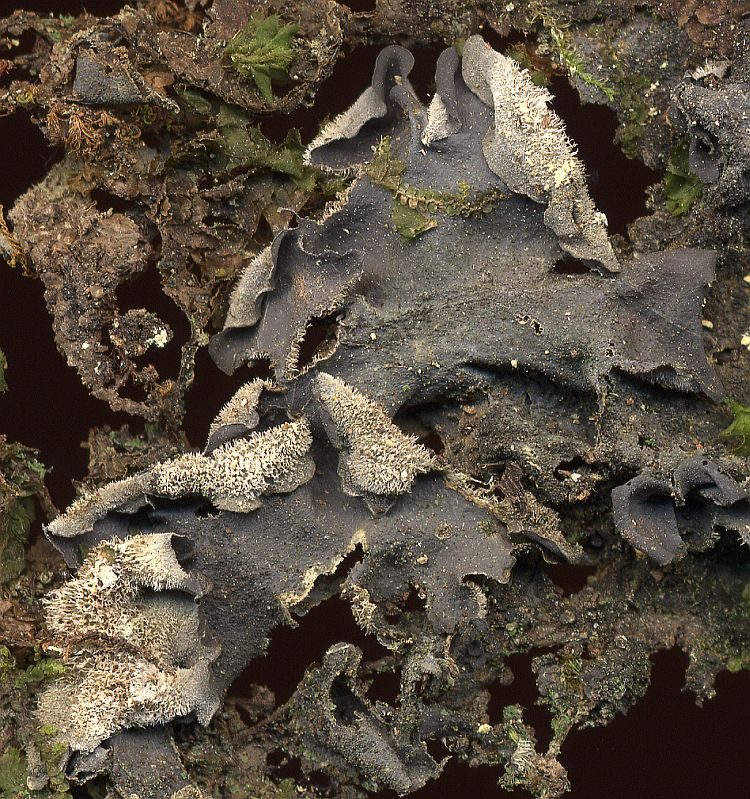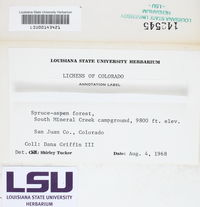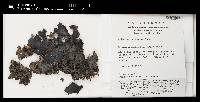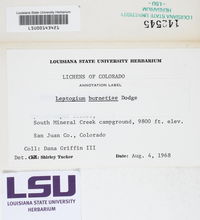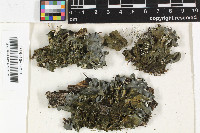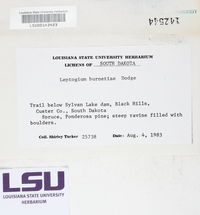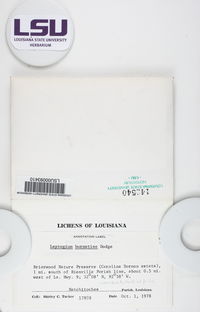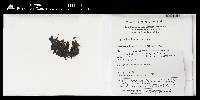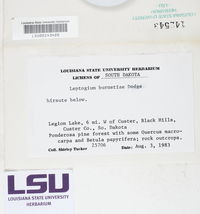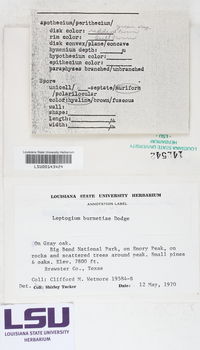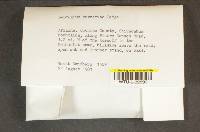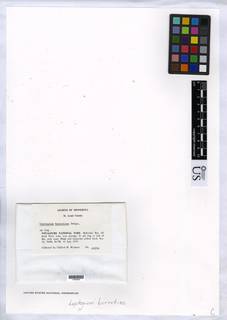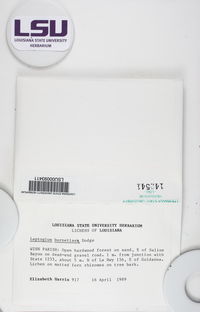
Consortium of Lichen Herbaria
- building a Global Consortium of Bryophytes and Lichens as keystones of cryptobiotic communities -
- Home
- Search
- Images
- Species Checklists
- US States: O-Z >
- US National Parks
- Central America
- South America
- US National Parks
- Southern Subpolar Region
|
|
|
|
Family: Collemataceae
|
Nash, T.H., Ryan, B.D., Gries, C., Bungartz, F., (eds.) 2004. Lichen Flora of the Greater Sonoran Desert Region. Vol 2. Thallus: foliose, 3-10(-15) cm in diam., loosely adnate, subdichotomously to irregularly lobate lobes: elongate, flabellate, +plane, separate to somewhat confluent, 3-15(20) mm wide, 100-150 µm thick; apices rotund, entire to crenate and isidiate, occasionally upturned upper surface: medium gray to bluish gray, dull to somewhat shiny, smooth, isidiate to sometimes phyllidiate isidia: scattered to dense, usually laminal but sometimes marginal, initially semi-globular but soon cylindrical, simple or branched, often clustered, concolorous with the thallus or more often darker internal anatomy: with upper and lower cortices consisting of a single layer of irregularly isodiametrical cells, internally with loosely interwoven chains of Nostoc and hyphae lower surface: pale to medium gray, smooth, with dense white to rarely pale brown tomentum of cylindrical hairs 0.2-1 mm long Apothecia: rare, laminal, stipitate, 0.5-2.5 mm wide disc: brown to red-brown, plane to convex margin: thalline, concolorous with the thallus, isidiate, often pubescent exciple: euparaplectenchymatous, 20-25 µm centrally hymenium: hyaline below and thinly brown above, 100-125 µm tall; paraphyses: unbranched, 1-2 µm wide, slightly inflated apically; subhymenium: pale yellow, 20-25 µm thick asci: cylindrico-clavate, 8-spored ascospores: hyaline, muriform, 3-4-septate transversely, 1-septate longitudinally, ellipsoid to subfusiform, 30-45 x 12-18 µm Pycnidia: not observed Spot tests: all negative Secondary metabolites: none detected. Substrate and ecology: on bark, rocks and mosses in montane forests World distribution: widespread in the montane tropics and extending into warm temperate regions of Asia, Africa, Europe and North America Sonoran distribution: Arizona and Chihuahua. Notes: Leptogium burnetiae may in certain forms be difficult to separate from L. saturninum. It is, however a thinner, bluer species with more coralloid isidia, that often form patchy clusters on the surface. |
|
|
|
Powered by Symbiota

